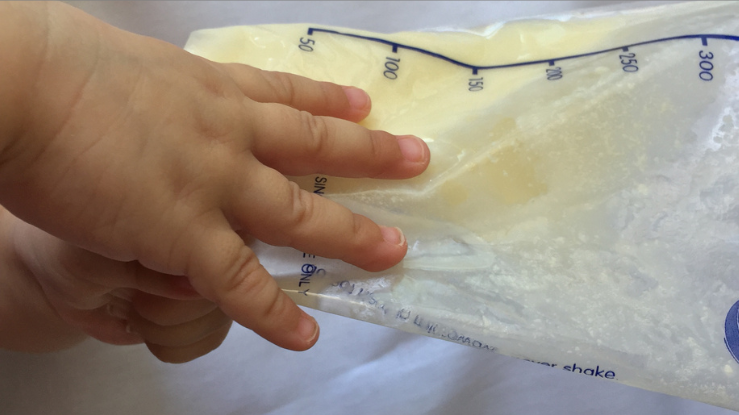
Is breast milk always white?
One day, we posted a picture on our social media page. It was a little bottle with breast milk, and we asked what color the milk was. Is breast milk white?
Who would doubt if milk is white, the sky is blue, the grass is green, and the sun is yellow? Well, sometimes breast milk is not white, and we are not only talking about colostrum, which always has that spectacular yellow to orange color. We are talking about breast milk, mature breast milk.
Breast milk can change color for various reasons; more than one mother contacted our consultation team, frightened to see that her milk was blue. Yes, expressed breast milk takes on a beautiful bluish color.
Human milk can be of other colors, and there are three causes that modify the color of human milk:
- Physiological causes
- Dietary causes
- Pathological causes
Physiological causes
Among the physiological causes during the first days of the baby’s life is the so-called “rusty pipes syndrome” that stands out. This is a phenomenon that can occur during the first days of the baby’s life. The increased blood supply to the milk ducts in the days before giving birth can create small “wounds” in the ducts; the blood accumulates inside the ducts and turns into a brown substance.
The milk may be completely red if there is a deeper internal lesion or mastitis. However, despite the appearance of the milk, the baby can still feed at the breast; you just have to know that the baby may spit up with traces of blood, and black strands (digested blood) may appear in their stools (poop). If you want to eliminate the remains of blood, you can express breast milk and let it rest in the fridge. That way, the blood settles to the bottom, so you can recover the “clean” milk from the top layer and discard the blood.
A greenish color is also normal, and nothing special needs to be done. You can continue with breastfeeding as this breast milk is also okay. The color is caused by the accumulation of fatty material in the duct
Dietary causes
Medical literature also reports a case of a woman who produced black-colored breast milk because of a medication she was taking to fight acne.
The color of breast milk can indicate a pathology
Pathological causes are more serious. Any nipple discharge outside of pregnancy and breastfeeding should be checked by a gynecologist, and the discharge should also be collected and analyzed. You should also be concerned about nipple discharge when it is spontaneous, which means it comes out on its own without any squeezing, when it only comes out on one side, and/or if it is clear and sticky, like an egg white, or with blood in it.
So, as you see, human milk is not always white. And if you have photos of the color of your milk and you would like to share them, please send them our way!
Any other questions about breastfeeding?
Download our App, LactApp, for Android or iPhone, where you can find more information on all things breastfeeding and motherhood.